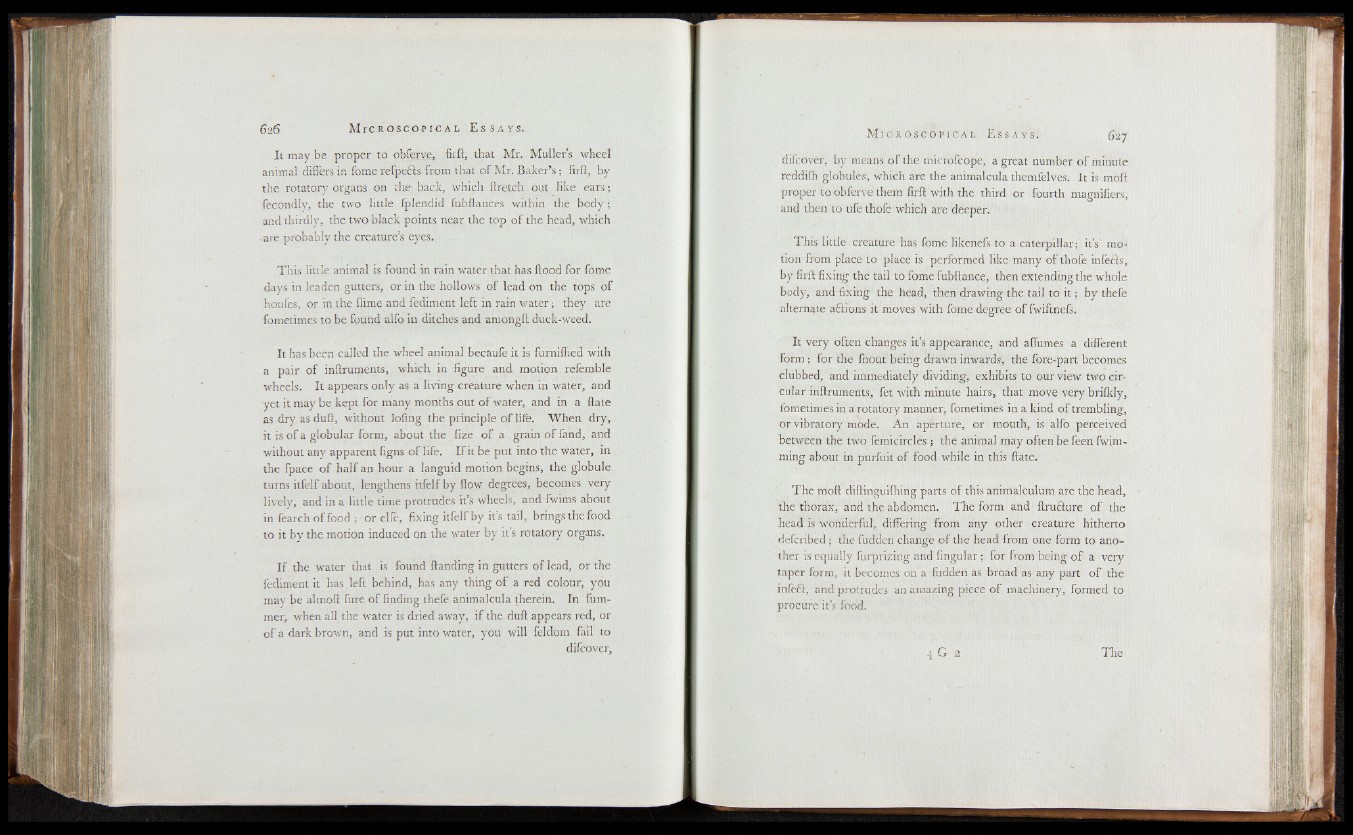
It may be proper to obferve, firft, that Mr. Muller’s wheel
animal differs in fome refpe&s from that of Mr. Baker’s ; firft, by
the rotatory organs on the back, which ftretch out like ears;
fecondly, the two little fplendid fubftances within the bo d y ;
and thirdly, the two black points near the top o f the head, which
are probably the creature’s eyes.
This little animal is found in rain water that has flood for fome
days in leaden gutters, or in the hollows of lead on the tops o f
houfes, or in the {lime and fediment left in rain water; they are
fometimes to be found alfo in ditches and amongft duck-weed.
It has been called the wheel animal becaufe it is furnilhed with
a pair of inftruments, which in figure and motion referable
wheels. It appears only as a living creature when in water, and
yet it may be kept for many months out o f water, and in a ftate
as dry as dull, without lofing the principle of life. When dry,
it is of a globular form, about the fize of a grain of fand, and
without any apparent figns o f life. I f it be put into the water, in
the fpace o f half an hour a languid motion begins, the globule
turns itfelf about, lengthens itfelf by flow degrees, becomes very
lively, and in a little time protrudes it’s wheels, and fwims about
in fearch o f food ; - or efte, fixing itfelf by it’s tail, brings the food
to it by the motion induced on the water by it’s rotatory organs.
I f the water that is found Handing in gutters of lead, or the
fediment it has left behind, has any thing o f a red colour, you
may be almoft fure of finding thefe animalcula therein. In fum-
mer, when all the water is dried away, if the dull appears red, or
of a dark brown, and is put into water, you will feldom fail to
difcover,
M i c r o s c o p i c a l E s s a y s . 627'
difcover, by means o f the microfcope, a great number o f minute
reddilh globules, which are the animalcula themfelves. It is mod
proper to obferve them firft with the third or fourth magnifiers,
and then to ufe thofe which are deeper.
This little creature has fome likenefs to a caterpillar; it’s motion
from place to place is performed like many of thofe infects,
by firft fixing the tail to fome fubftance, then extending the whole
body, and fixing the head, then drawing the tail to i t ; by thefe
alternate aftions it moves with fome degree o f fwiftnefs.
It very often changes it’s appearance, and aflumes a different
form; for the fnout being drawn inwards, the fore-part becomes
clubbed, and immediately dividing, exhibits to our view two circular
inftruments, fet with minute hairs, that move very brifldy,
fometimes in a rotatory manner, fometimes in a kind of trembling,
or vibratory mode. An aperture, or mouth, is alfo perceived
between the two femicircles; the animal may often be feen fwim-
ming about in purfuit of food while in this ftate.
The mod diftinguifhing parts of this animalculum are the head,
the thorax, and the abdomen. The form and llructure of the
head is wonderful, differing from any other creature hitherto
defcribed; the fudden change of the head from one form to another
is equally furprizing and fingular ; for from being o f a very
taper form, it becomes on a fudden as broad as any part of the
infefl, and protrudes an amazing piece o f machinery, formed to
procure it’s food.